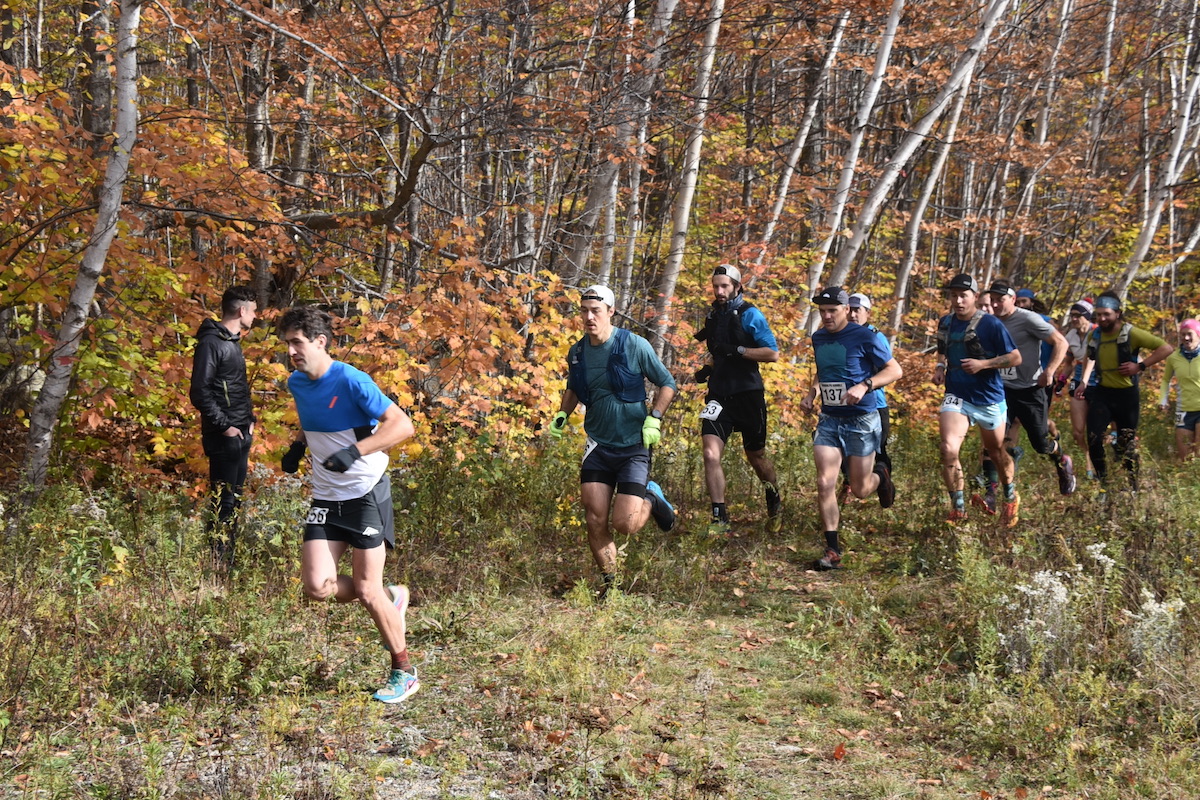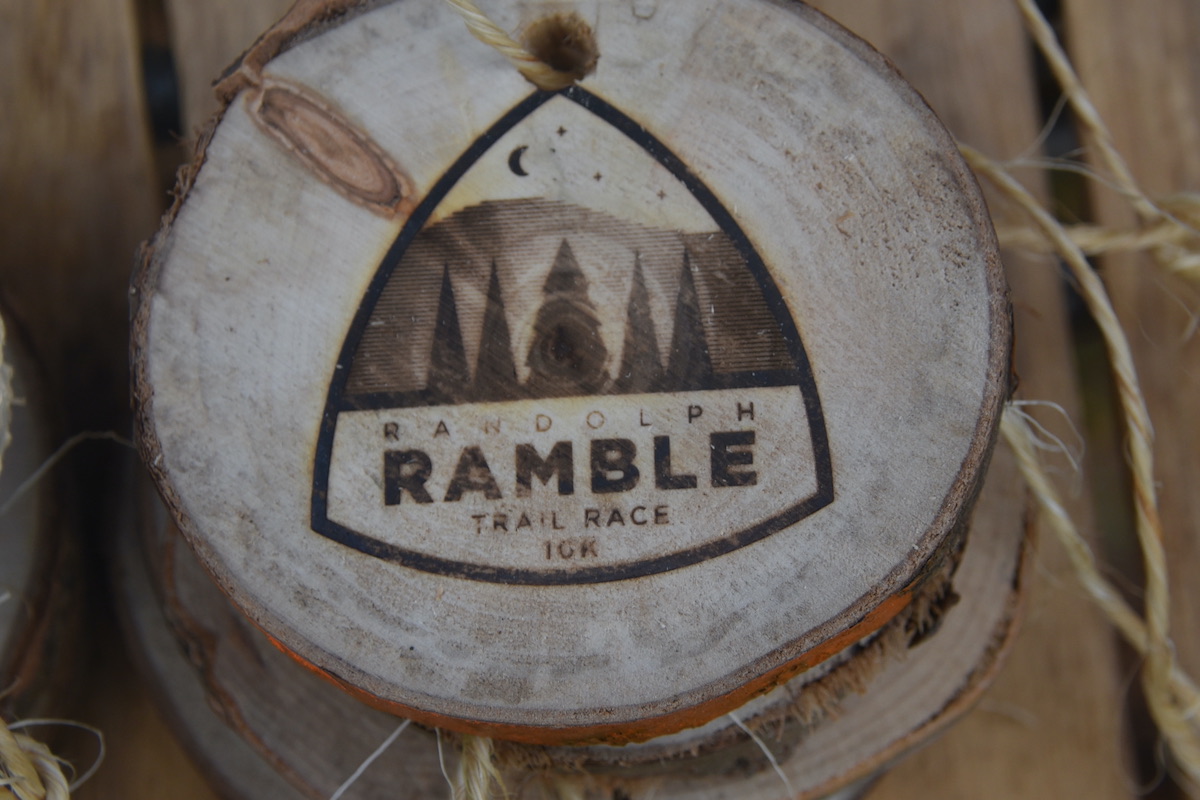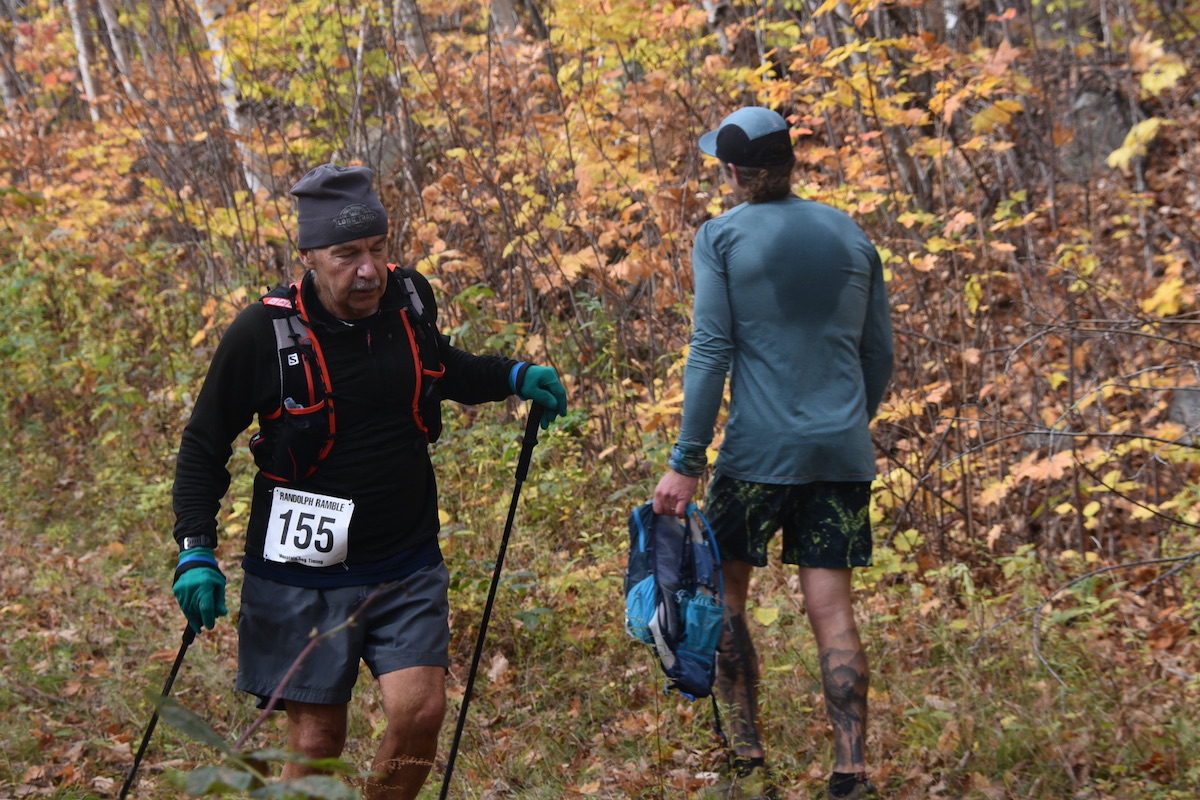Over many years as a high school teacher, I learned to expect the cheeky moment in springtime when one of my soon-to-be-gone students would say, “So I was wondering, when will you graduate?” Obligatory smile and head shake. “Maybe next year,” I’d say.
As many of us do, I kept on, one year running into the next, the pace shifting up or down, but always running on. That, if given good fortune, is the course of a life, I’d think, as another cohort of students pulled away into the future, growing smaller as they leapt from step to step. And then, one year not long ago, I realized that it was time to graduate, to break from the annual circle and start making linear tracks along new trails.
* * *
October brings my favorite fall ritual, this year’s Randolph Ramble. Held in Randolph, New Hampshire, the race is a 10-kilometer mountain circuit with 2,025 feet of climbing (and, one hopes, descent). Two years ago, on a rainy 39-degree Fahrenheit day (which also featured beautiful colors filtered through gray fog), I “ran” the Ramble, and for the first time, I was a race’s red lantern, this first and only time by 18 whole minutes. [Editor’s Note: A red lantern is someone who is the last finisher of a race.]
That curious day spawned “Last at First,” a short essay here on iRunFar about this new experience, and it ushered in a next level of maturity.
Last year’s Ramble got COVID-19-canceled.
So here we are in 2021: I get an alpine start in the dark for the drive to Randolph, in large measure because I also start extra early in the Ramble. I have “graduated” from the racers (runners) division to the Limmer division, a loose agglomeration of foot-folk named for the iconic boot of the White Mountains of New Hampshire and Maine.
We are the slower-footed folk, given an hour head start and then, I suppose, harried down by the hound-runners leading the racing pack. Being a Limmer is a self-assignment, and our limited pack turns out to be one short of a six. As befits this lightly administered, good-spirited race, each of us is turned loose whenever the spirit moves.
I start my watch (that habit persists) and set out solo, feeling fresh on the gradual quarter-mile rise, and then make the turn onto singletrack and begin the day’s climb. At first moderate, and then sharp, the climb calls out my age problem — uphill, once a strength, has become difficult. Sometime in the past decade, some stealth operative seems to have replaced my “engine” with one that’s liters smaller; whatever my level of fitness, I simply must go … slowly … uphill.
I know this and have devised strategies, but mostly I will endure, chuffing up as remembered selves bound away before me. There goes five-years-ago me, climbing at pace, even in that year’s six inches of snow. Younger versions of me vanished in the first quarter mile.
The Limmer division of the Randolph Ramble asks for a bit of mountain context. The boots that lend it their name were (and still are) the boot for generations of White Mountain walkers, climbers, and ramblers. Made by Peter Limmer and sons in Intervale, New Hampshire, purchasing my boots required a visit to the shop, where amid the racks of completed boots, or those awaiting repair, you had your feet measured. The measurements became a plaster cast and the handmade boot took shape around it.
Once you had endured the waiting period — my initial pair of Limmers gestated for 14 months — you put on your just-for-me boots and began trotting up the trail-miles. This went on for years; those years took only a gradual toll on your rugged boots. And, when those thousands of miles asked for a new sole or revived upper, you went back to Limmer’s where your foot-cast hung out still, and they remade your boot. Boot-o-meter set back to zero; good for thousands more miles.

The lead pack at this year’s Randolph Ramble with eventual winner Tristan Williams in the lead. Photo: Timothy Mather
But Limmer boots are — as you would guess of such lifers — heavy. My pair weighs five pounds. When I began running on trails in the 1980s as an extension of the joy I’d found over running roads (Why not triple the joy by being in the woods and on mountains?), my Limmers began to give way to the light-footed shoes that wore out rapidly and changed design even more quickly.
My running shoes had less support for sure, but being light-footed and balanced compensated, even as traditionalists sometimes layered on scorn for my shoe choice in the backcountry. “We carry out people like you all the time,” a ranger in the Adirondack Mountains of New York said to me one day high on the side of Giant Mountain. The sins of my ill-shod sisters and brothers — all mine.
So, being dubbed a Limmer posits an unhurried pace, even as I am shod in my Hoka One One Speedgoats. It is a step back and, for me, a step forward.
This October day seems intent on making up for all the slush, cold, and wet of recent years. It is what White Mountain legend Joe Dodge called a “fifty-center,” his highest meteorological praise. As I top out on the 1,400-foot climb, I get a quick look at the higher peaks and pockets of color still leafy in the valleys below. But mostly I feel freed.
A rippling ridge of stone and wood stretches before me, and now, given a lighter ask from gravity, I can begin to run. Which I do … at a modest pace, but also with quick-stepping rhythm that kicks through the leaves and allows adjustment to the roots and rocks below. For the next two miles, I am on my own and just plain happy.
Still, I am aware that, by now, the trailing pack has begun their run, and I can imagine the lead runners quickly sassing the early climb and gravity. Sometimes as I come off the ridge, first one, then another will hound up behind me, and I will step aside and watch them go by.
At an hour and 42 minutes in, I hear leafy commotion coming behind me. We’re on a sharp downslope, where I’m taking care with my footing. A thin thirty-something with dark hair flowing behind, leaps from a glacial strew of boulders, floats easily across, and lands four feet lower. One foot down, the other already airborne, he flies up … and away.
Time ticks and runs, on; so do I. That’s quite a lead, I think, as minutes pass. Five minutes later a second runner arrives, followed closely by runner number three, who is also woman number one. They too are one part land the other part air. What is the sound of two hands clapping? My applause in these deep woods.
More come up behind me, and, as I watch the backsides of these lead runners disappear, pangs of regret and pleasure speckle me. Even over a slough of downed leaves that hides the rocks and roots, they are flowing; the rhythm is foot-music played up-tempo. And then they, and it, are gone.
My music is a shuffle of notes with tiny intervals; I return to it, and soon I realize I am humming. Once, I could flow and fly down, and these passing runners have returned me to that pleasure. Without them, I wouldn’t get back there. But my shuffle-tune is also the hum of happiness present.
Maybe next year.
Call for Comments
- Have you ever run in the Randolph Ramble?
- What experiences have you had that seemed like a setback, but were really a transition to a new state of mind?



